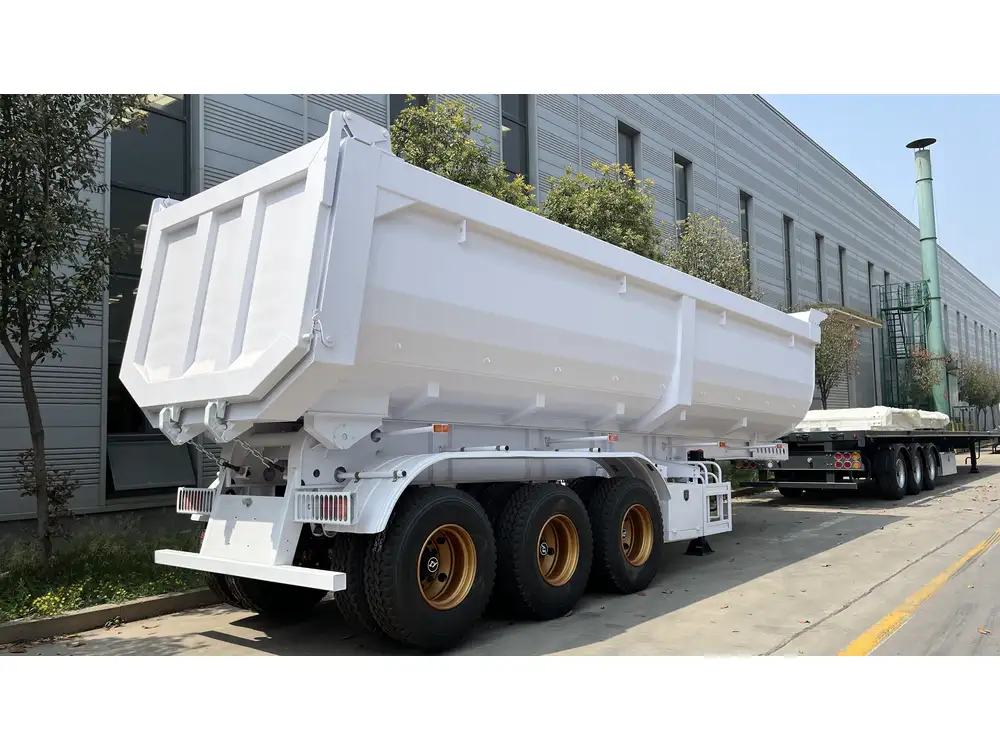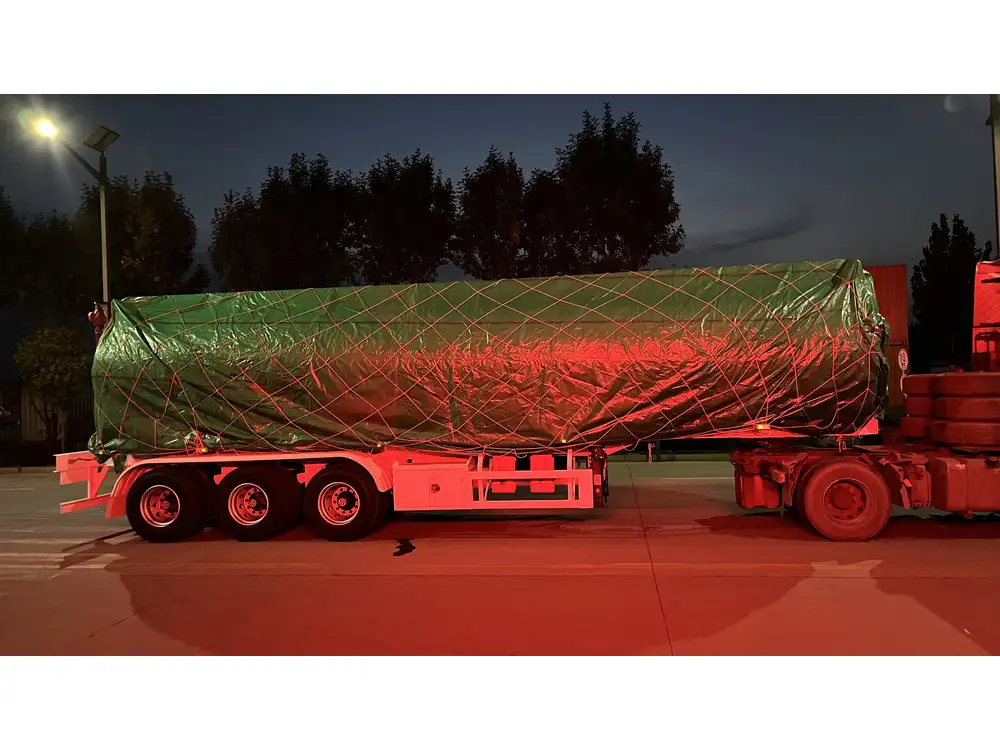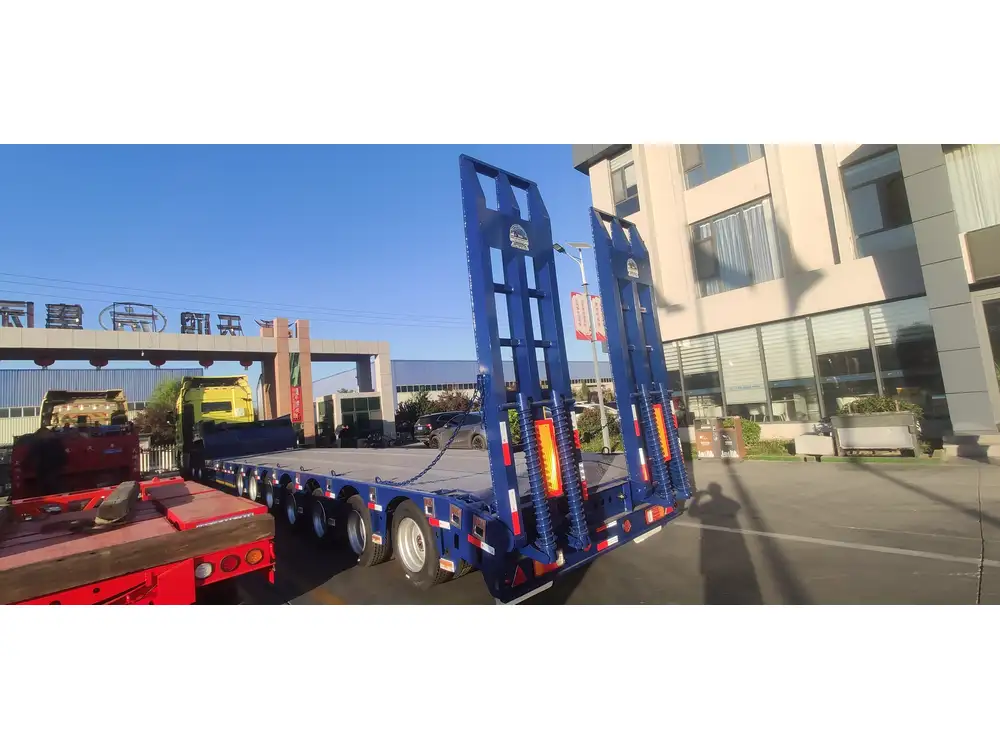Understanding the weight of an empty semi-trailer is crucial for manufacturers, fleet managers, and truck drivers alike. This knowledge not only influences compliance with state and federal regulations but also affects fuel efficiency, payload calculations, and overall operational costs. In this article, we will delve into the various factors that impact the weight of an empty semi-trailer, provide a detailed analysis of different types of semi-trailers, and break down the relevance of these weights in practical applications.
What Defines the Weight of an Empty Semi-Trailer?
The Basics: The Curb Weight
When discussing an empty semi-trailer, the term “curb weight” often comes into play. Curb weight refers to the total weight of the trailer without any cargo but may still include necessary equipment like spare tires, fuel tanks (if applicable), and basic accessories. Generally, this weight serves as a baseline for calculating payload limits.

The Weight Components
To dissect the curb weight further, we can look at its various components:
Frame and Chassis
- Material: Most semi-trailers use steel or aluminum. Steel is heavier but offers durability, while aluminum trailers are lightweight and often used to maximize payload.
- Construction: The structural design, including reinforcements and crossmembers, can significantly add to the overall weight.
Suspension System
- Different types of suspension systems (leaf springs, air ride, etc.) contribute variably to weight.
- Advanced air ride systems primarily designed for enhanced ride quality and load stability might be heavier than traditional systems.
Axles and Wheels
- The number of axles dramatically affects weight; typical semi-trailers have two to five axles.
- Tire choice can also influence the overall weight. Heavy-duty tires generally weigh more but offer better load ratings.
Other Equipment
- Brake systems (air brakes vs. hydraulic brakes), toolboxes, and electronic systems can add to the total weight.
- Any additional accessories, like fenders and bulkheads, are also considered.
Weight Variability Among Different Trailer Types
Different semi-trailer types exhibit variances in weights. Below is a comparative analysis of commonly used semi-trailer styles:
| Type of Semi-Trailer | Average Empty Weight | Weight Classes |
|---|---|---|
| Standard Flatbed | 4,000 – 5,500 lbs | Light-duty to Mid-duty |
| Refrigerated Trailer (Reefer) | 12,000 – 15,000 lbs | Mid-duty to Heavy-duty |
| Tanker Trailer | 10,000 – 15,000 lbs | Mid-duty to Heavy-duty |
| Dry Van Trailer | 10,000 – 14,000 lbs | Mid-duty to Heavy-duty |
| Lowboy Trailer | 10,000 – 14,000 lbs | Mid-duty to Heavy-duty |
Importance of Knowing Empty Weights
Grasping the empty weight of your semi-trailer has ramifications that extend beyond mere curiosity. Here are a few critical considerations:
- Regulatory Compliance: Many jurisdictions enforce limits on maximum allowable weight on highways. Knowing your empty weight ensures adherence to these regulations when loaded.
- Fuel Efficiency: The weight of a trailer directly correlates with fuel consumption. Lighter trailers can improve overall miles per gallon (MPG) and reduce operational costs.
- Payload Management: A solid understanding of empty weight aids in optimizing the payload. Overloading can lead to legal ramifications and increased wear on the vehicle.

Calculating Total Weight: Example Scenarios
Understanding how to calculate total weights effectively can optimize operations. Consider two scenarios:
Scenario 1: Standard Dry Van Trailer
- Empty Weight: 12,000 lbs
- Loaded Weight: 36,000 lbs
- Total Gross Weight:
- Gross Vehicle Weight Rating (GVWR): 48,000 lbs
- Total weight from the previous two values: 12,000 lbs (empty) + 36,000 lbs (cargo) = 48,000 lbs
Scenario 2: Refrigerated Trailer
- Empty Weight: 15,000 lbs
- Loaded Weight: 45,000 lbs
- Total Gross Weight:
- GVWR: 60,000 lbs
- Total weight from the previous two values: 15,000 lbs + 45,000 lbs = 60,000 lbs
In each scenario, keeping track of the weights ensures compliance and promotes safe transportation of goods.

Impact of Weight on Trailer Design
Engineering Considerations
Manufacturers are constantly innovating to produce lighter and more efficient trailers. Here are essential elements that affect trailer design and its subsequent weight:
- Material Selection: As stated earlier, aluminum is becoming increasingly popular for trailers due to its lightweight properties without sacrificing structural integrity.
- Aerodynamic Design: Streamlined designs can reduce drag, resulting in better fuel efficiency, which is essential over long hauls.
- Technology Integration: Advanced technologies (such as composite materials) are being used to create lighter components, offsetting heavier items.
Testing and Certification
Manufacturers must rigorously test trailer weights to ensure they meet industry standards. Compliance with the Federal Motor Carrier Safety Administration (FMCSA) regulations is essential for all semi-trailer manufacturers.

How to Manage Weight Distribution
The distribution of weight within a semi-trailer is just as critical as knowing its empty weight. Uneven weight distribution can lead to instability, increased tire wear, and general unsafe conditions. Here are some strategies for effective weight management:
- Proper Loading Techniques: Load evenly across all axles to maintain stability during transport.
- Use of Load Bars: These tools can help secure cargo and avoid shifting during transit.
- Regular Inspections: Conduct frequent assessments to ensure that the trailer remains within legal weight limits with its current load.
Technology and Weight Tracking
Advanced Weight Sensors
Innovations in technology are enabling real-time weight tracking systems that monitor the weight of a trailer dynamically. These systems use sensors to provide data that can be invaluable in avoiding overweight penalties and ensuring optimized load management.

Software Solutions
There are numerous software solutions available that assist fleet managers in tracking weights, fuel consumption, and operational efficiency. These applications can simplify the entire management process, providing insights and analytics to make informed decisions.
The Future of Semi-Trailer Weights
Sustainability Trends
As the trucking industry evolves, there’s a pronounced push towards reducing carbon footprints. The weight of semi-trailers will continue to be a focal point in developing eco-friendly options. Materials such as advanced polymers and hybrid composites could gain traction, pushing the industry’s weight efficiency to new heights.

Potential Regulations
Governments around the world are increasingly focused on environmental impact. Future regulations may enforce stricter limits on not just total weight but also the types of materials used in manufacturing to promote sustainability.
Conclusion
Understanding the weight of an empty semi-trailer is not merely an academic exercise; it’s a practical necessity for everyone involved in the transport and logistics sector. By recognizing the various factors—ranging from materials and design to real-time tracking technologies—we can optimize operations for safety, compliance, and efficiency. As technology continues to develop and regulations evolve, staying informed will ensure that manufacturers and operators remain at the forefront of a changing industry landscape. This article serves not only as a guide for current practices but also as a foundational knowledge structure for anyone wishing to delve deeper into the realm of semi-trailer weights and their implications.
By synthesizing these insights, we equip ourselves with the tools needed to navigate the complexities of semi-trailer operations, ensuring not just compliance but also a competitive edge in the marketplace.



